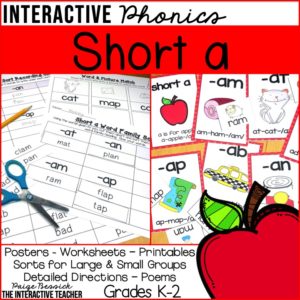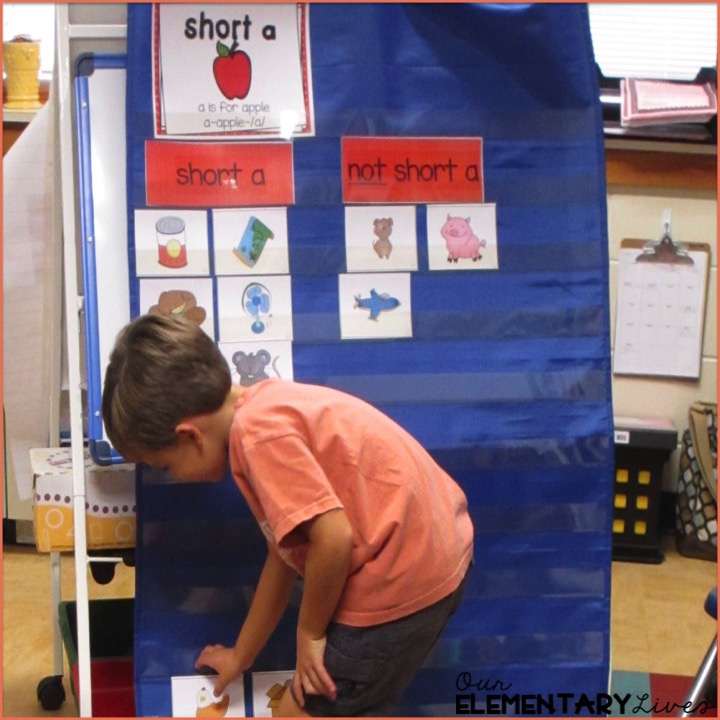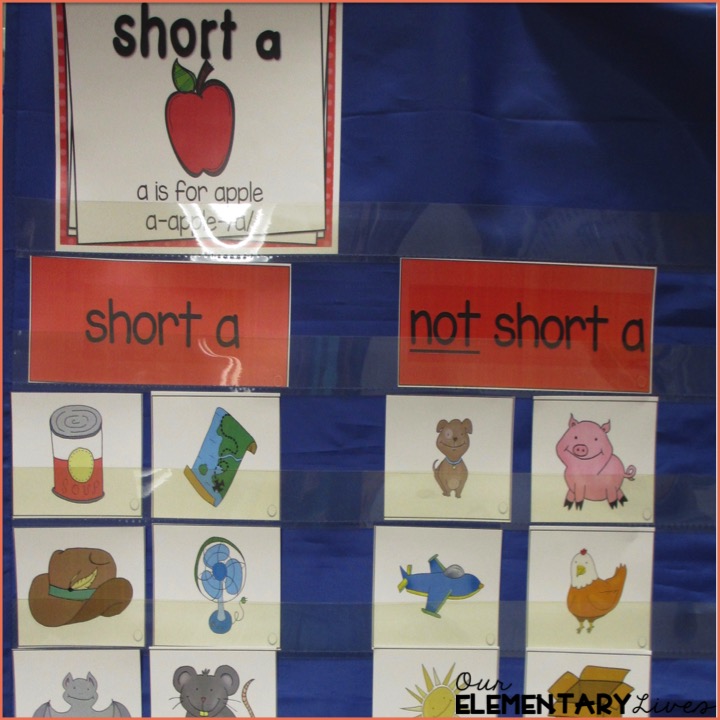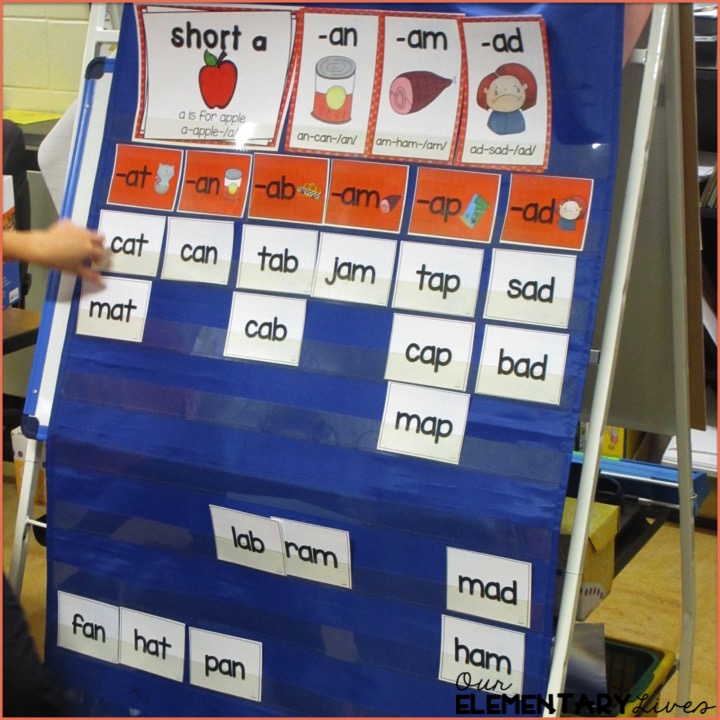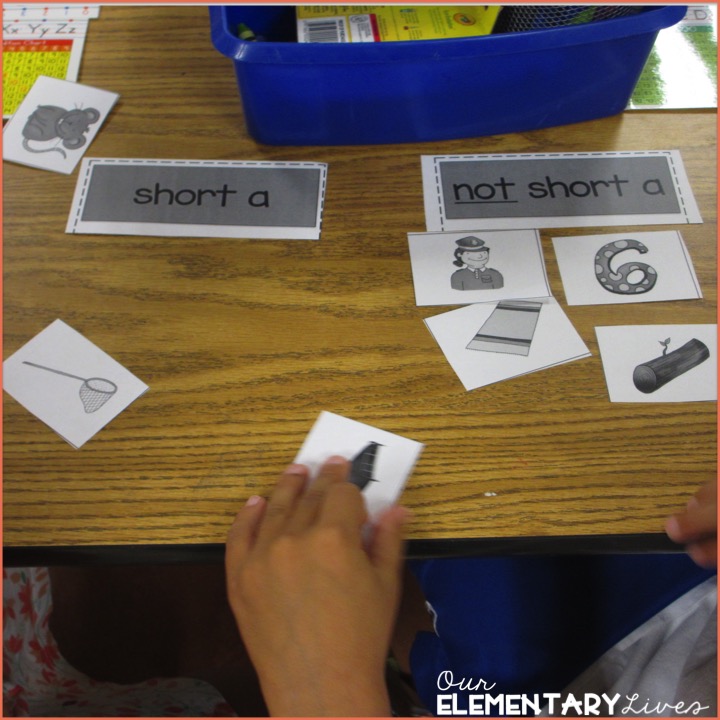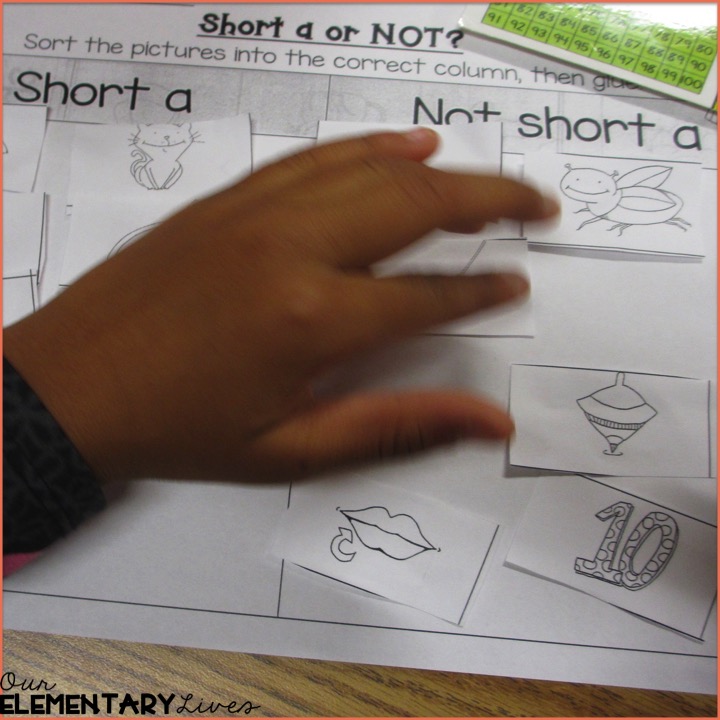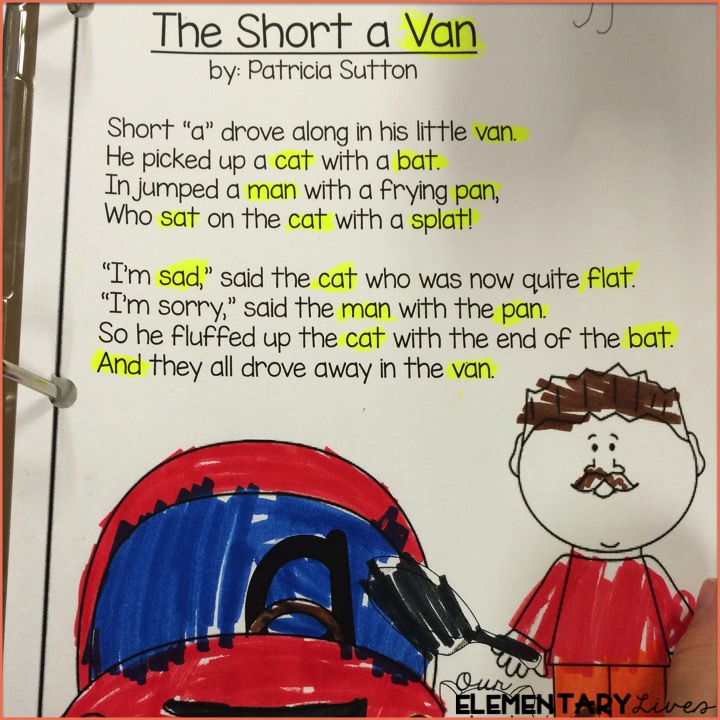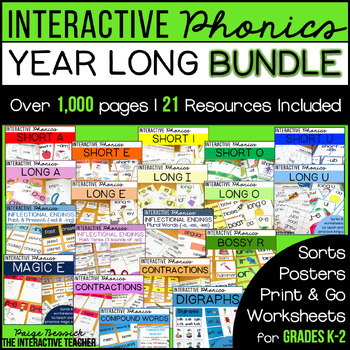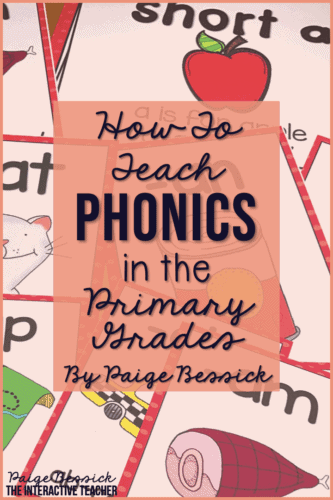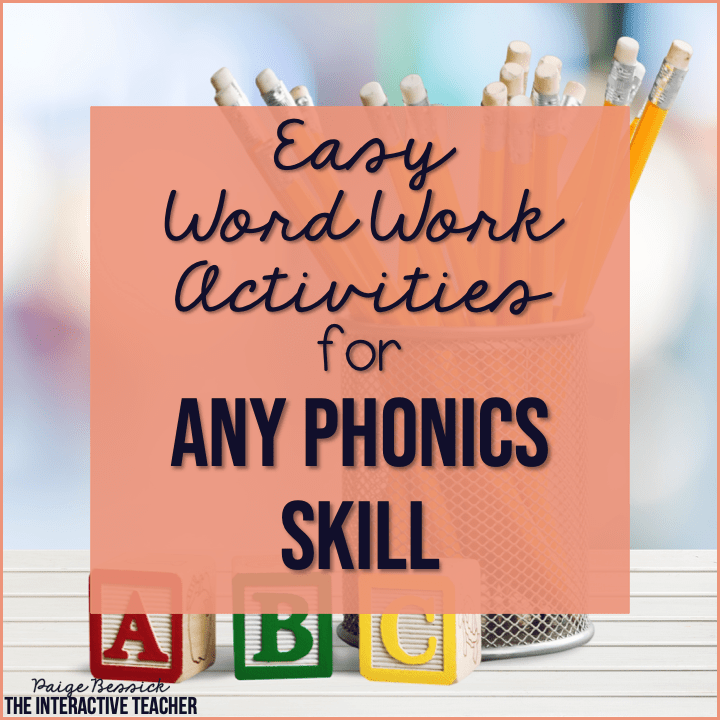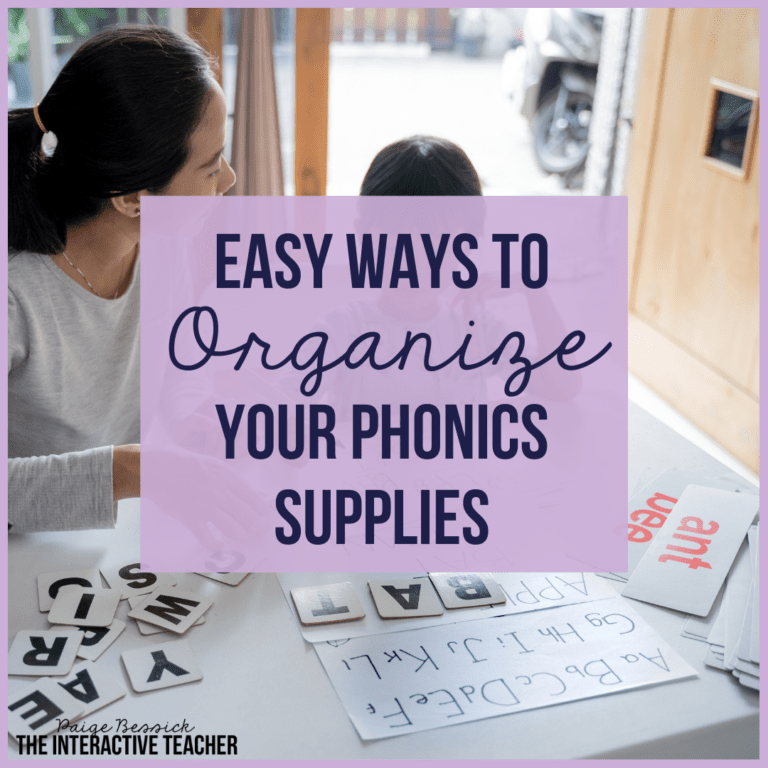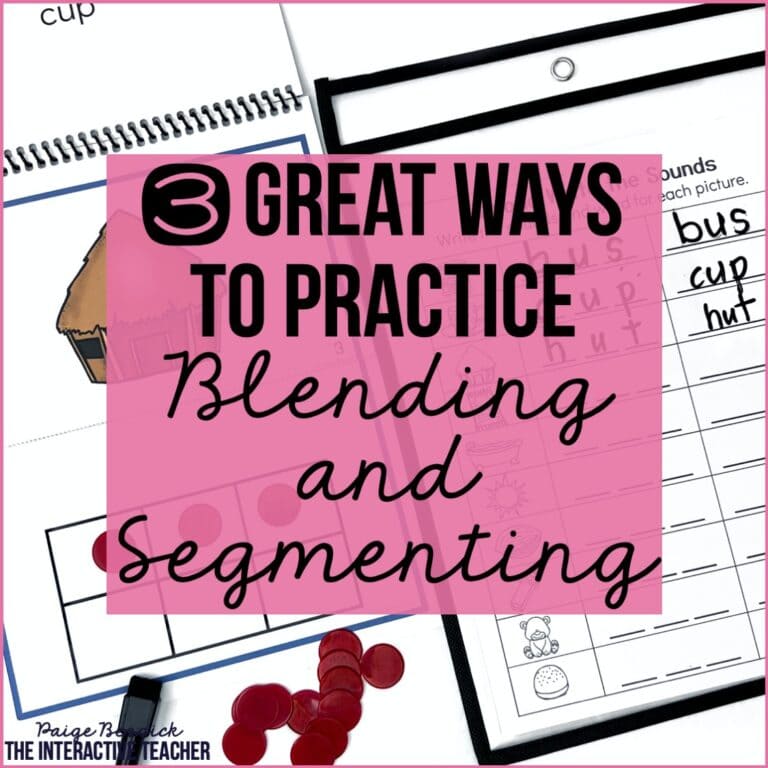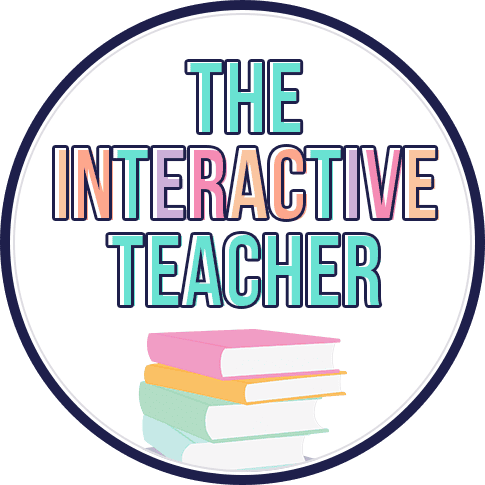Teaching phonics is probably one of my favorite things to teach. In first grade especially, there is so much growth from the beginning of the year to the end. I love watching my students’ knowledge grow. They come into first grade barely knowing their letter sounds and short vowels and most of them leave knowing their long vowels. First graders learn so much in one year and that’s why I love teaching first grade and I especially love teaching phonics. Keep reading to see how I teach ANY phonics skill.
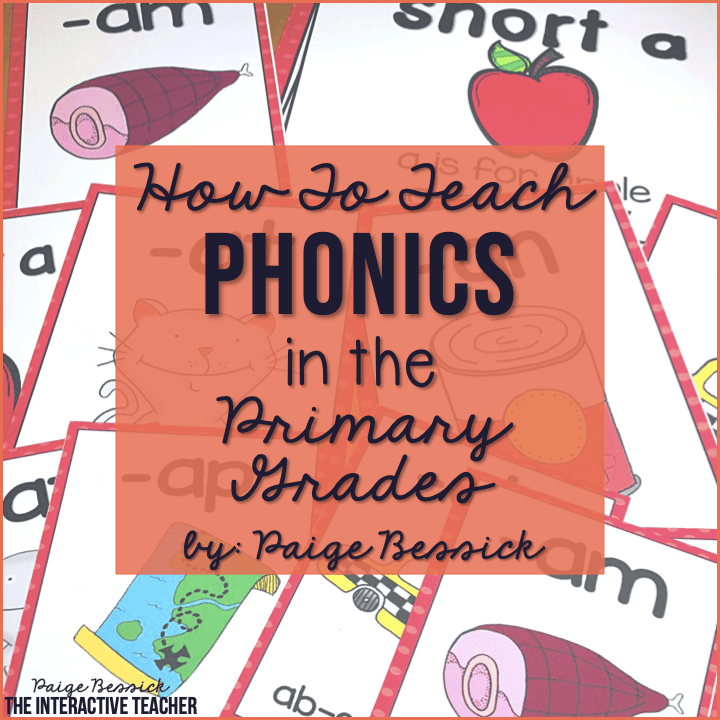
This blog post will go through specifically how I teach my students the short a phonics skill, but this is exactly how I teach EVERY OTHER phonics skill too. I believe it is so important to teach phonics skills following common routines. That way students can focus on learning the skill and not learning the activity or routine to go along with the specific phonics skill.
Update Summer, 2021
I have to update you all on some recent developments, before I go into the rest of the blog post. In the summer of 2021, the Science of Reading, has come back onto the scene. While it’s been around for a while, this reseach has become prevelent in the teaching word this year.
Because of that, I took the opporutnity to do a book study for the book, A Fresh Look at Phonics: Commone Causes of Failure and 7 Ingredients for Success .by Wiley Blevins.
This book has been a game-changer in my undersanding of teaching phonics, and has really made me think about the processes, routines, and activities that I use to teach phonics. While I will continue to use sorts, as mentioned below, there are some key skills that I will be including in my daily phonics instruction.
As I work to create more phonics resources for my students (and for you too!), I encourage you to learn more about the importance of teaching phonics and how to implement key skills into your routines.
My *NEW* phonics instruction will include all of these components (some things I’ve always done, and others I’m starting to add immediately):
- Phonemic Awareness: I’ve always done this and Heggerty is what I use.
- Blending and Segmenting: I’ve done in the past, but will be implementing in a new way.
- High-Frequency Words: have always taught, but will be teaching based on sounds, and words needed for reading, and I will NOT be calling them “sight words.”
- Word Buildling: I’ve done in the past
- Sorts: see the rest of this blog post ????
- Dictation: I have included more as a dual-language teacher, but will include it more as a form of instruction
- Decodable texts: never have really included more than a simple poem, but will DEFINITELY be doing now.
So, as you see, sorts are just a part of the phonics instruction we should be doing. And I encourage you to check out >>THIS<< book if you’re interested in learning more.
Teaching Phonics with Sorts
To teach short a, I use my Short a Word Work Activities: Sorts, Worksheets & Poems. I created this product as a way to teach this skill to the whole group, small group, and individuals. The whole group activities allow me to teach the skill to the whole class, the small group or center activities allow my students to practice the skill with support from each other and the independent activities provide more practice or can be used as a quick assessment.
Let’s get started! Here’s how I teach ANY phonics skill.
Scaffolding
Whole Group Sorts
Each one includes:
1. Short vowel or not
2. Word & picture match
3. Word family sort
Small-Group Activities
After the large group sort, sometimes on the same day or a different day (depends on our time-we usually only have 15-20 minutes for word work), I will break students into small groups or partners to practice the skill we just did together. This is still the we do. They are doing it in their group or with their partner, working together to complete the task correctly. I will also sometimes do this as a center activity so they can practice this task in a small group several times. It never hurts to practice these skills more than once.
Independent Activities or Assessments
Additional Activities
I also like making anchor charts as a class. This will then go up in our classroom as a tool for the students to use when they are reading and writing. Each word family card is also included in the product.
To create the anchor charts I have them just remember some of the words we worked on this week. I have also had them use the iPads and the app EPIC! to find words with the phonics skill we’re learning. Check out this blog post, Easy Word Work Activities, to see how I involve the students even more in creating anchor charts for phonics skills.
That’s it, easy peasy, right? Haha, if only it were that simple. You know some students will get it right away and some won’t until you’ve retaught and practiced the skill for 3 weeks. You will have to reteach some and try to challenge others. That’s just how our classrooms work and that’s what makes teaching so fun. There is never a dull moment.
If you like this short a resource, then I think you’ll also like my other short and long vowel resources. Click >>HERE<< to see all of my phonics resources. I also have all of the long vowels, bossy r, inflectional endings, contractions, magic e.
There are so many ways to teach phonics. There are so many programs and other TpT sellers who also have great products! This is how I do it and this is what works for me and my students.
Dual Language Considerations
- Continue the scaffolding process
- Continue posters and verbal practice of sounds with visuals.
- Use pictures and words that relate to our content (science/social studies) focus and unit.
- Use pictures and words my students know as ELL learners.
- Complete metalinguistic analysis and discuss how this is similar/different to Spanish.
![]()


